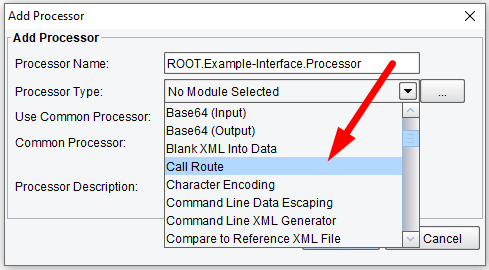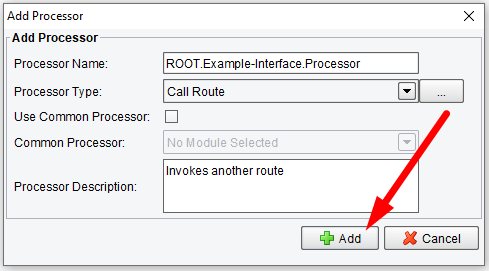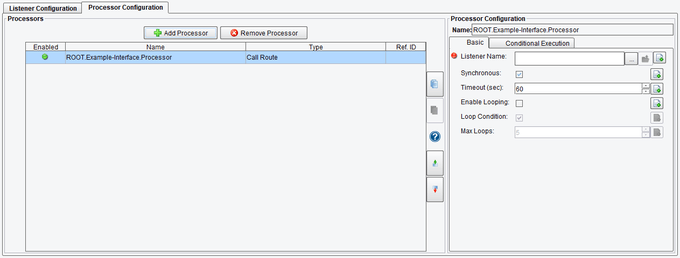Call Route Processor
The Call Route Processor Invokes Another Route or Interface
The eiConsole will allow you to call an external Route or Interface using the Call Route Processor. As with all the components of the eiConsole the user is presented with a graphical interface with easy to configure panels.

Processor (Adapter) Configuration Drop-Down List
Select the Call Route tab and click on Add Processor.

Click on Add Processor
Basic Call Route Processor Configuration Options
Add a Listener Name. If you are calling a synchronous route, provide the Listener Name and a Timeout. This name should match the name of a retrievable or programmable Listener in another route. If the route does not return a synchronous response in the specified timeout, an exception will be thrown.
The Basic tab allows you to set:
- Listener Name – specifies the programmatically invoked Listener which will initialize the route
- Synchronous – specifies if this call-out is synchronous (generates a synchronous response)
- Timeout (sec) – specifies the amount of time permitted to the invoked route before it is considered a failure. It does not attempt to abort.
- Enable Looping – enables looping the route callout based on a given boolean expression or max iteration
- Loop Condition – condition that needs to be met to finish the loop
- Max Loops – max number of times a condition can loop
Call Route Processor Basic Configuration Options
Conditional Execution Call Route Processor Configuration Options
On the Conditional Execution tab, you can set additional Processor execution conditions. The transaction data-dependent condition may be specified here as an enhanced expression. If this expression returns anything other than TRUE (ignore case) – this processor will be skipped. No additional configuration for this Processor is required.
Call Route Processor Conditional Execution Configuration Options


